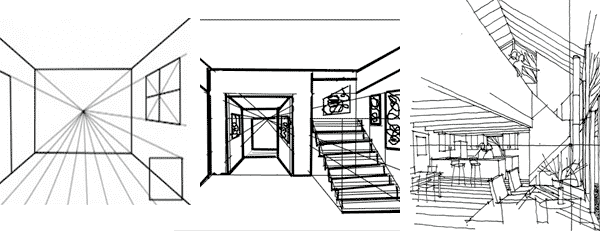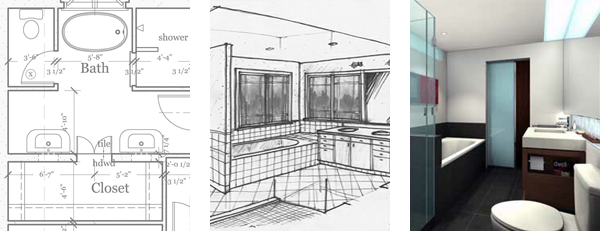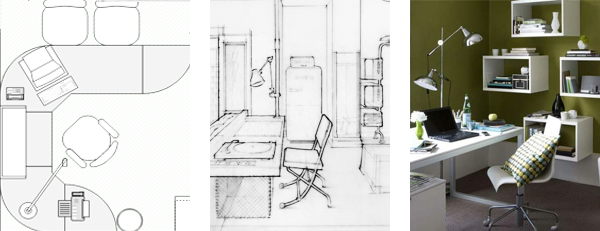Interior Design Career Information:
Starting an interior design career can be a dream come true, but that doesn't mean you may not feel some anxiety about beginning this new phase of your life. Knowing what to expect in the industry can help minimize stress.While all this is good news for aspiring interior designers, students should prepare themselves to face a competitive job market. Getting the right interior design education and experience will give you an advantage.
Interior Design Career Paths:
If you find the variety, flexibility and creativity of an interior design job appealing, you'll be happy to know that this is no one-size-fits-all career. You can customize your interior design career to fit your interests and working style. Here are some things to consider.
 |
| What does an interior designer do? |
Self Employment vs. Design Firms
Many interior designers are self-employed or do contract work on top of their jobs at design firms. When deciding where you want to work, you must evaluate the risks and rewards for yourself.Work Hours - If you are self-employed or work for a small firm, you are more likely to work flexible hours as you adjust your schedule around your clients' needs and deadlines. If you start your interior design career in a large design firm, you will probably have more predictable hours.
Environment - Large design firms may have the resources for a more comfortable work environment and state-of-the-art equipment. They also have established connections with related firms and specialists. This can be an important consideration for anyone starting an interior design career.
Clients - If you are self-employed, you may have more say in which jobs you take; however, you are responsible for finding your own clients and connections.
As your interior design career progresses, you may discover a preference for one type of interior design over another. You can specialize in designing for corporate settings, restaurants, hotels, and hospitals or other health care facilities, or you may decide to focus on residential design. You may even narrow your focus further to kitchens or bathrooms, for example. If you like choosing colors and fabrics, but would rather not handle the nitty-gritty details, such as safety codes, you may want to be an interior decorator rather than an interior designer. Although many people use the terms interchangeably, interior decorating is less technical than interior design.
Whether you prefer sticking to one interior design style that fits you perfectly, or you want to switch things up now and then, an interior design career gives you many options. Choose from types of interior design, such as residential, modern or Feng Shui interior design.
Types of interior design...
- Bathroom Design - Help your clients get the bathrooms of their dreams with designs that are elegant and restful as well as functional.
- Corporate Interior Design - Design ergonomic and efficient work spaces that will project the right image for a company.
- Exhibit Design - Create exhibits for clients ranging from art galleries to zoos, or help companies design exhibits for tradeshows and showrooms.
- Feng Shui Interior Design - Use the principles of Feng Shui to get the energy flowing and create balance in an environment.
- Green Interior Design - Develope expertise in designing spaces using products and methods that are environmentally friendly.
- Health Care Interior Design - Help make health care centers such as hospitals, cancer centers, drug treatment centers, nursing homes, social services providers, doctors' offices, dental offices, etc. more efficient and welcoming through interior design.
- Hotel Interior Design - Create inviting spaces for the hotel industry while considering several important factors such as: comfort, function, aesthetic appeal, concept and budget.
- Japanese and Asian Interior Design - Bring the graceful, uncluttered aesthetic of Japanese and Asian interior design to clients in any geographic location.
- Kitchen Design - Give your clients the kitchen they've always wanted. Develop expertise on appliances and efficient kitchen design.
- Modern Interior Design - Incorporate the sleek look and practical principles of modern design into your work.
- Residential Interior Design - Work with clients to improve the form and function of their living spaces, while helping them define and reflect their personal style.
- Restaurant Interior Design - Develop design concepts that will contribute to positive customer experiences and the success of restaurant businesses.
- Set Design - Use your design skills to work in film, television or theater.
- Zen Interior Design - Create beautiful interior spaces using the minimalist style of Zen interior design.
Learn more about interior design specialities to find the one that's right for you. When you're deciding on an interior design school, find out about training they offer in the interior design specialities that interest you. You may also be interested in the infographic below showing the history of interior design.




















































